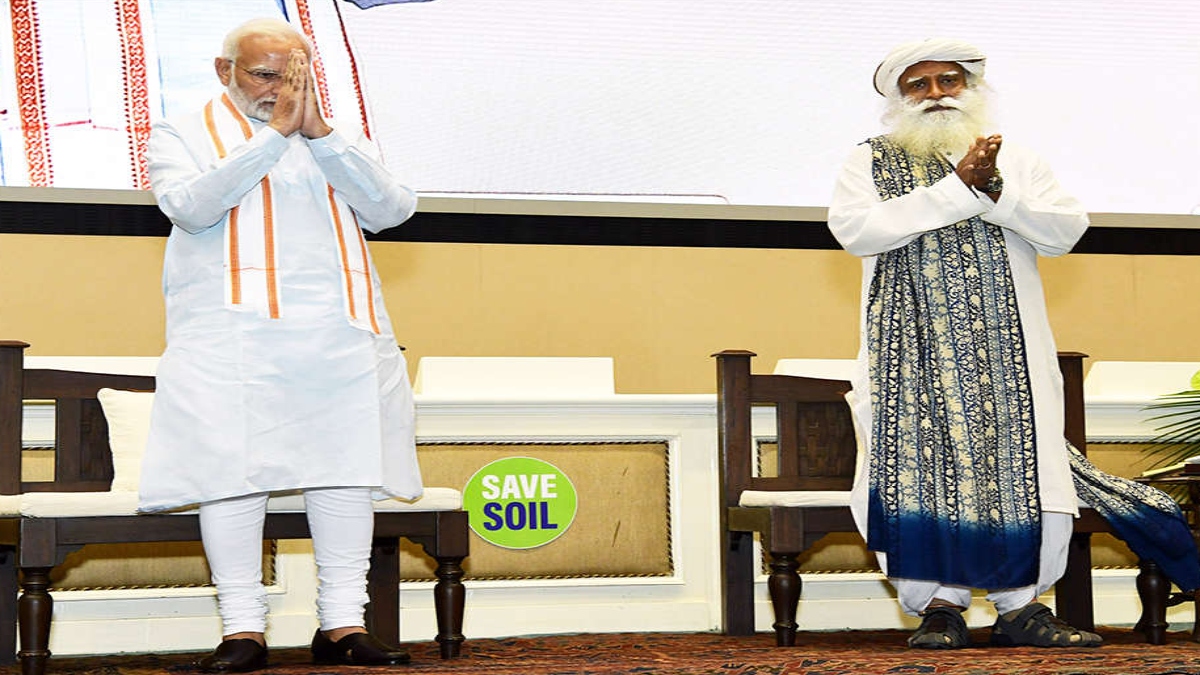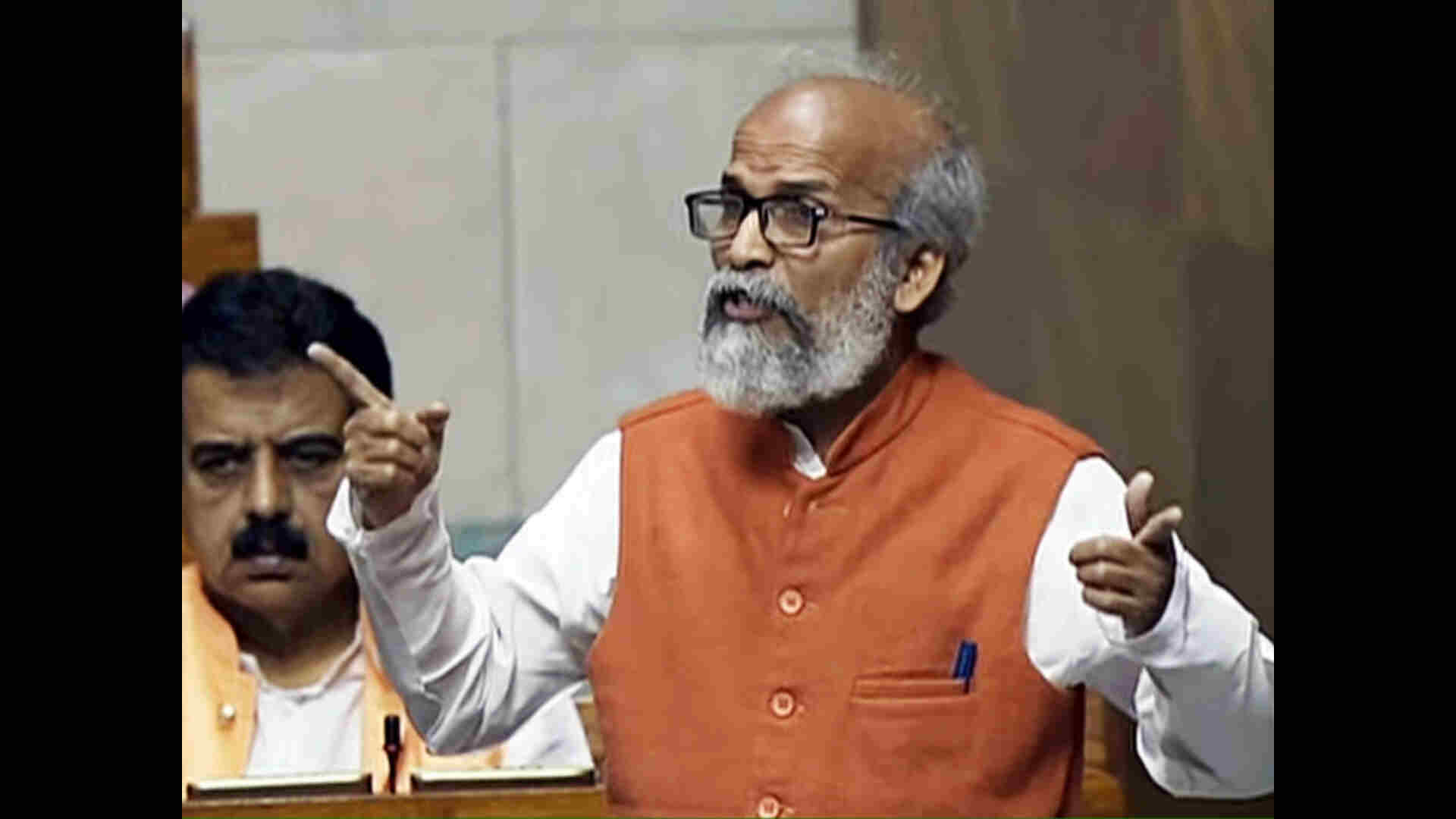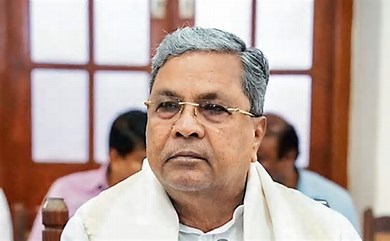
A recent initiative on soil conservation by the illustrious Sadhguru of Isha Foundation, followed by a passionate speech on this concern by Prime Minister Narendra Modi provokes a much desirable discourse on soil conservation as a sine qua non of life on earth. Sadhguru is not exaggerating to say that we are currently munching on food that was meant for unborn children. Two powerful personalities sharing the podium to advocate a cause calls for an insightful consideration of the issue that brought them together to share their thoughts.
Agriculture scientists have shown time and again that the first six inches of soil over the ground is richest in micronutrients which not even the global fertilizer industry working together can ever replace once it is lost. This top soil is a gift of Almighty, a bank of food and a reserve for tough times. It is churned over millions of years and in view of that, conventional agriculture adjusted their choice of crops and seeds according to soil requirements. Most of us have seen a pattern of crop rotation and crop symbiosis being practiced in Indian villages. Farmers adopt a practice of growing different types of crops such as maize, wheat, peas (pisum sativum), leafy bathua (chenopodium album) to reduce reliance on fertilizers, mitigate pest and weed pressure and at the same time developing resistance to pests and weeds. We have learnt in basic science courses how legumes fix nitrogen in soil to feed crops to strength. Crop Symbiosis, where common demands co-exist, such as the wheat grown for the market and Bathua for family’s nutritious curry growing with wheat, prevented malnutrition in children and anaemia in pregnant mothers, formed a normal way of Village life. These tiny soft plants produce nitrogen equal in amount to their acreage ie; one ton of peas produce a ton plus of nitrogen per acre. If appropriately managed, these tiny creatures can close down the big capitalistic businesses of the chemical fertilizer industry. I was always inquisitive about the farmer leaving the land fallow after a crop when this could be used for a purpose. Once I got a curt and a slightly angry response from a villager comparing fallow land with a woman’s womb which needs some time to produce another child. Sadhguru is so correct when he starts with his master statement that soil is living and not inert, alas, we have already lost 50% of our country’s top soil. Did the Prime Minister extend some solutions strong enough to combat this rapid advance of our country towards starvation and famine?
Sadhguru mentioned “humus” as strength of the top soil. It is an organic matter formed of decomposition of plants and animals, a space for carbon sequestration and a natural combatant to climate change based vulnerabilities. Just as destruction of mangroves at the country’s coastline brought extinction of some of the best ocean fish and plants, subsequently reducing fisherfolk income, so did the destruction of top soil bringing severe income loss for villagers and a horrifying food scarcity for the country. We are so grounded in the belief that storage houses of the Food Corporation of India have enough to feed all of us during a threatening period, but in actual terms it may just have enough to feed the public distribution system for a few months. Policies of the government have encouraged a shift of land towards non-agricultural purposes. We lose 30,000 ha of agricultural land per year and have already lost more than 3 mha in the last 15 years. This may entail a shortage of food to almost 15-20 m tonnes very soon. The Committee on Doubling Farmers’ Income 2016, in its report has very well taken the point of diversion of agricultural land to non-agricultural usage but an alarming fact that lands under the barren and uncultivated category have declined from 28.16 mha to 17.23 mha brings out prospects of a dangerous ecological disaster in the waiting. These barren lands are now being diverted to agricultural purposes since rich agricultural lands have been diverted to the construction industry. This capture of barren land or wastelands, blocks groundwater rechargeshed and also takes away land from an already insufficient availability of grazing grounds. These wastelands form seasonal ponds and nurture humus generating organic ring. Therefore, loss of precious top soil in India has increased from 6000 m tonnes per year to almost 12,000 m tonnes per year, equivalent to 8-10 m tonnes of plant nutrients which reduce agricultural yield by almost 50 m tonnes per year. This is a shocking neglect, remains unattended even now. The combined amount spent on flood and drought relief per year far surpasses what the government could have spent on focused soil conservation measures (Catchment and Command Area programmes, Compensatory Afforestation CAMPA) and in turn would have also reduced flood and drought damages and losses. While forest area increase should be a priority for soil conservation, in 2021 alone, India lost 127 sq. km of natural forest which is equivalent to 64.6Mt of CO₂ emissions. Further to this, between 2019 and 2021, India lost more than 1,020 sq. km of forest cover having some of the most pristine and biggest biodiversity hotspots from the northeastern states and central India. Lack of adequately focused policy has already done immense damage. The top strip of soil full of carbon rich nutrients is being lost at 10 and 40 times the rate at which it can be naturally replenished. At present, 97.85 million hectares (mha) of land is degraded which is an area 2.5 times the size of India’s largest state of Rajasthan and much of it has been added in the last 15 years. In September 2019, our PM’s announcement at the United Nations Convention to Combat Desertification that India will achieve its target of becoming land degradation neutral by 2030 is much invisible on ground and the PM did not touch this concern during his speech at the Sadhguru podium.
The PM’s speech on soil conservation moved hearts but the focus remained on election worthy narratives. He spoke at length about programmes of waste management, Sawachh Bharat Abhiyan, Single Use Plastic, Namami Gange, achievements on Solar Energy and measures to curb carbon emissions in environmental management. It is nowhere hidden that with current rates of soil degradation we have barely 60 years of topsoil left. The country has already entered a vicious cycle of chemical fertilizer dependence. With world’s largest numbers of cattle in our country, there is little being said on gobar gas plants and organic manures. PM did make a subsidiary mention to “Gobardhan Yojana” and much needed biogas plants in the end, but strategy which could turn this into a success story goes missing from the talk. In 1992, there were 900 gobar gas plants raised in the country but for lack of cattle management and chaos due to illegal slaughter houses they under-functioned. While Go Shalas become a cornerstone of current governance policies, the government stands isolated in effectively managing them beyond a talk of religion. Those at the ground level who flag cow protection are not ready to undertake responsibilities which come with that. Panchayats and Municipal Wards are the best grounds for accountable administration but a top down approach and lack of trust has weakened a more cooperative interaction with meaningful NGOs and community based organizations. Caste and religion has weakened organic farming and any related activity in many direct and indirect ways. Harmony is the key for better performance of initiatives which the PM talked about in his speech.
The PM mentioned five relevant points to precede soil conservation; soil to be chemical-free, conservation of soil organic matter, increase humus in soil, ground water recharge shed and protection of forest areas. In continuity, a meaningful initiative of soil-health card given to 22 crore and more people combined with a soil testing network emerged as a powerful tool in soil conservation. The Atal Bhu Yojana which advocates judicious use of water ‘per drop more crop’ is expected to have optimistic returns in soil conservation. This policy also raises hope against the money-environment guzzling surface irrigation projects which have become a norm for development in blatant oversight of the fact that only 1.6% is surface water which is found in lakes, rivers and swamps. The rest of water existing as sweet water for us is ground water and soil moisture but government agricultural policies waste it out through tube wells, boring pumps and diverting land from forests and agriculture. Another policy carrying hope is Pradhan Mantri Krishi Sinchayee Yojna (Watershed Development Component) (WDC-PMKSY) which replaces the previous three programmes; Drought Prone Areas Programme (DPAP), Desert Development Programme (DDP) and Integrated Wastelands Development. Programme (IWDP) within the Department of Land Resources. Despite this change in 2016, with a budget of ₹53 billion (US$700 million), a task which could have become simpler such as the restoration of village ponds, wells and other water bodies is now immensely complicated within the federal sharing of resources and lack of identifiable structure of implementation. Consequently, people’s participation is reduced and local community based organizations feel increasingly demotivated and disconnected.
Every analysis needs data and details of processes from government websites. The Ministry of Agriculture and Farmers’ Welfare as usual is mostly under construction and so unavailable. I was redirected to the Department of Agriculture and Farmers’ Welfare which rather had nothing to match its title. How far did the governments travel since the establishment of the Central Soil Conservation Board in 1953 was an issue but history was missing on government websites. Research which had become more authentic since the Right to information Act 2005, appears tougher today due to lack of relevant data and low web measurement index of websites. The non-government sources still provide sufficient data and the government should take their indicators with concern. I decided to fall back on my more than two decade old work of 1998, The Grassroot Concerns of Public Administration where a point was strongly prognosticated, that unless public administration undertakes committed soil conservation measures at the grassroots the country may be led to an irretrievable production losses in agriculture and severe food scarcity. (p.14). All governments till today ignore the fact that district magistrates in collaboration with panchayats should be made responsible for targeted achievement on soil conservation before they sign off “change of land use” demands for non-agricultural purposes. The District Town and Country Planner’s role which has become all encompassing today and the biggest evil behind soil destruction, is made to stand parallel to the District Magistrate. Land has been lost in connivance with all the governments irrespective of ideology and straight through the eyes of law and people. Yet the PM did not have a word on administrative reforms at the grassroots without which soil conservation is impossible. One may have a million incredible programmes but if there is no accountable and decentralized structure to implement it and if this structure is not grounded in people’s participation, they end up in psychedelic Mad Hatter debate of the Alice in Wonderland eschewing self-knowledge as a caterpillar.
Amita Singh is President, NAPSIPAG Centre for Disaster Research (NDRG); Senior Professorial Fellow ISS; and former Professor, Jawaharlal Nehru University (Law, Governance and Disaster Management).















